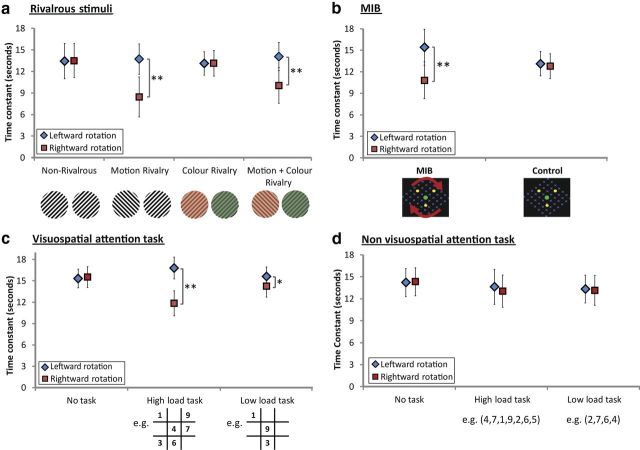Figure 3.
Effect of bistable stimuli and attentional tasks on VORTC in different sets of 10 right-handed individuals. a, b, The bistable stimuli that contain spatial component (motion rivalry, motion-and-color rivalry, and MIB) produced asymmetric VOR modulation by reducing TC following the rightward (red squares) compared with leftward rotations (blue diamonds). c, d, High- and low-load visuospatial attention tasks induced asymmetric VOR responses but non-visuospatial digit tasks demonstrated no modulation. Bars represent SD; *p < 0.01;**p < 0.001.

